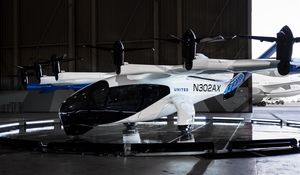
A growing chorus of financial experts and institutions are sounding the alarm, warning that the current fervent investment in Artificial Intelligence (AI) companies, characterized by soaring valuations and speculative enthusiasm, bears striking resemblances to historical market bubbles and could precipitate the next global stock market crash. Concerns are mounting that many AI company shares are significantly overvalued, with their prices detached from tangible earnings and proven business models, setting the stage for a potentially sharp and disruptive market correction.
This apprehension is not confined to a few isolated voices; major central banks, international financial bodies, and prominent CEOs are increasingly highlighting the risks. The intense exuberance surrounding AI’s transformative potential has driven market valuations to dizzying heights, creating a "fear of missing out" (FOMO) mentality among investors. However, beneath the surface of record-breaking investments and optimistic projections, a more cautious assessment reveals underlying vulnerabilities that could unravel the current AI-driven market rally.
The Anatomy of an AI Bubble: Unproven Models and Speculative Fervor
The core of expert warnings lies in several critical factors contributing to what many are calling an "AI equity bubble." One primary concern is the prevalence of unproven business models and a lack of tangible returns despite enormous capital expenditure. A Massachusetts Institute of Technology (MIT) study notably found that 95% of organizations investing in generative AI are currently seeing zero returns. Even high-profile companies like OpenAI, despite a staggering valuation, are projected to incur cumulative losses for several years and may not break even until 2029. This disconnect between investment and immediate profitability is a significant red flag.
Furthermore, there is excessive capital expenditure and debt fueling the AI boom. Large-scale data center buildouts, crucial for AI infrastructure, are sometimes happening "on spec," with capital outpacing real demand. Analysts are particularly "spooked by what looks like circular investment and spending" between major AI players like Nvidia (NASDAQ: NVDA) and its biggest customers, potentially inflating perceived demand and creating an illusion of robust market activity. U.S. venture capital firms have poured an unprecedented amount into AI, potentially reaching over $200 billion this year, marking the largest wave of tech investment since the the dot-com era.
Speculative fervor and over-optimism are also driving valuations to unsustainable levels. Investors are exhibiting "intense exuberance" and "aggressive risk-taking behavior," pushing major indices to record highs. This pervasive optimism, with AI seen as a preeminent growth driver, mirrors the irrational exuberance that characterized the dot-com bubble of the late 1990s, where valuations soared far beyond actual earnings potential. JPMorgan (NYSE: JPM) CEO Jamie Dimon has described "elevated asset prices" as a "category of concern," indicating that valuations are stretched and many assets appear to be entering bubble territory. Even OpenAI CEO Sam Altman has reportedly acknowledged an AI bubble, agreeing that investors are "overexcited about AI."
The most stark evidence comes from stretched valuations relative to earnings. While the forward Price-to-Earnings (P/E) ratio for the S&P 500 has not yet matched the dot-com peak, individual AI powerhouses exhibit extremely high ratios. For instance, Nvidia (NASDAQ: NVDA) trades at over 40x forward earnings, Arm Holdings (NASDAQ: ARM) exceeds 90x, Palantir (NYSE: PLTR) has a P/E of 501, and CrowdStrike (NASDAQ: CRWD) boasts a P/E of 401. Many AI startups are also seeking valuations far above their meager annual recurring revenue, indicating a significant speculative premium.
Corporate Impact: Beneficiaries, Risks, and Competitive Realities
In this environment, a select few companies are currently benefiting immensely from the AI surge, primarily those at the foundational layers of the AI stack. Chip manufacturers like Nvidia (NASDAQ: NVDA) have seen their market capitalization skyrocket due to insatiable demand for their GPUs, which are critical for training and running large AI models. Cloud service providers such as Amazon (NASDAQ: AMZN) with AWS, Microsoft (NASDAQ: MSFT) with Azure, and Alphabet (NASDAQ: GOOGL) with Google Cloud are also experiencing a boom as AI companies lease vast computational resources. These tech giants, with diversified revenue streams, are somewhat insulated but still vulnerable to a broad market downturn.
However, the competitive implications for many AI-focused companies and startups are precarious. Many AI software companies are operating at significant losses, selling their services at prices that do not cover their substantial payments to cloud service providers. This "get big or get lost" mentality is unsustainable, relying on an expectation of future price increases that could lead to a drop in demand for AI services if they materialize. A market correction would severely impact these firms, making it difficult to raise further capital and potentially leading to widespread consolidation or failures.
The concentration risk in the market is another critical concern. The heavy weighting of market capitalization in a handful of AI-heavy tech giants means that a significant downturn in these companies could send ripple effects across the entire market, impacting global financial stability. This creates a systemic vulnerability, as a correction in one or two major players could trigger a broader sell-off. For established tech giants, a correction might mean a slowdown in AI investment and a shift in strategic priorities, but for many nascent AI startups, it could be an existential threat.
Wider Significance: Economic Tremors and Historical Echoes
The potential for an AI-driven market crash carries wider significance for the global economy and the broader AI landscape. The Bank of England (BoE) has explicitly warned of an increased risk of a "sharp market correction," particularly for technology companies focused on AI, stating that equity market valuations appear "stretched." The BoE’s Financial Policy Committee (FPC) noted that investors might not have fully accounted for potential risks, which could lead to a sudden correction and a drying up of finance for households and businesses. The International Monetary Fund (IMF) has echoed these concerns, with its head noting that current stock valuations are "heading toward levels we saw during the bullishness about the internet 25 years ago," warning that a sharp correction could drag down world growth.
This situation draws direct comparisons to previous AI milestones and breakthroughs, but also to historical market bubbles. While AI's transformative potential is undeniable, the current investment frenzy mirrors the dot-com bubble of the late 1990s, where speculative investments in internet companies far outpaced their actual profitability or even viable business models. Bridgewater’s Ray Dalio has likened current AI market sentiment to the 1998–99 Nasdaq rally, warning of inflated prices combined with rising interest rates.
Potential concerns extend beyond financial markets. The Bank of England has outlined "downside risks" that could slow AI progress, including shortages of electricity, data, or chips, or technological changes that might lessen the need for the current type of AI infrastructure being built. Rapid obsolescence of AI data centers also presents a challenge to long-term returns, as the technology evolves at an unprecedented pace. These factors could further destabilize investments and dampen the overall enthusiasm for AI development if profitability remains elusive.
Future Developments: Navigating the Inevitable Correction
Experts widely predict that a market correction, if not a full-blown crash, is increasingly likely. Forrester Analyst Sudha Maheshwari bluntly stated in a report that "Every bubble inevitably bursts, and in 2026, AI will lose its sheen, trading its tiara for a hard hat." While the exact timing remains uncertain, the consensus is that the current pace of valuation growth is unsustainable.
In the near-term, we might see a flight to quality, with investors retreating from highly speculative AI startups and consolidating investments in established tech giants with proven revenue streams and more diversified AI portfolios. Long-term developments will likely involve a more sober assessment of AI's economic value, with a stronger emphasis on actual profitability and sustainable business models rather than just technological promise. Companies that can demonstrate clear return on investment from their AI initiatives will be better positioned to weather the storm.
Challenges that need to be addressed include improving the transparency of AI company financials, developing more robust valuation metrics that account for the unique characteristics of AI development, and potentially regulatory interventions to curb excessive speculation. What experts predict will happen next is a period of recalibration, where the market differentiates between genuine AI innovators with viable paths to profitability and those that have merely ridden the wave of hype.
Wrap-Up: A Crossroads for AI Investment
In summary, the current warnings from financial experts about an impending AI-driven stock market crash highlight a critical crossroads for the artificial intelligence industry and global financial markets. The intense enthusiasm for AI, while rooted in its genuine transformative potential, has created a speculative environment where many company shares appear significantly overvalued. Key takeaways include the prevalence of unproven business models, excessive capital expenditure, speculative fervor, and stretched valuations, all reminiscent of past market bubbles.
This development's significance in AI history could mark a crucial maturation point, forcing a shift from speculative investment to a focus on sustainable, profitable applications of AI. The long-term impact will likely involve a more disciplined investment landscape, fostering stronger, more resilient AI companies that can deliver real-world value.
In the coming weeks and months, market watchers should pay close attention to several indicators: the earnings reports of major AI players and cloud providers, any shifts in venture capital funding patterns, and statements from central banks regarding financial stability. The ability of AI companies to translate technological breakthroughs into consistent revenue and profits will be the ultimate determinant of their long-term success and the market's stability. The "toxic calm before the crash" scenario, as some describe it, demands vigilance and a clear-eyed assessment of the risks inherent in this unprecedented wave of AI investment.
This content is intended for informational purposes only and represents analysis of current AI developments.
TokenRing AI delivers enterprise-grade solutions for multi-agent AI workflow orchestration, AI-powered development tools, and seamless remote collaboration platforms.
For more information, visit https://www.tokenring.ai/.





